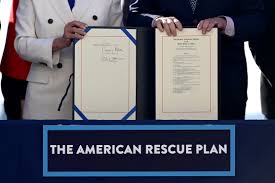The American Relief Fund Program, signed by President Biden on March 11, 2021, guarantees direct funding to all cities, towns and villages in the United States. The US Treasury Department is responsible for overseeing the program. NLC has identified your most frequently asked questions about the State and Local Fiscal Recovery Fund (SLFRF) grant program. These answers will be updated as additional information becomes available. For your convenience, we have divided frequently asked questions into sections.
What is the final rule?
The final rule was issued on January 6, 2022, and will take effect on April 1, 2022. State and local funds allocated in the American Relief Fund Program are subject to specifications outlined in the final rule. The final rule provides a comprehensive list of eligible, sponsored, and prohibited expenses. The summary of the final rule provides a non-exhaustive list of the final rule’s provisions and serves as a guide to some of the actions that local governments can take with their recovery funds.
Source: Examviews.com
What instructions are there?
The US Department of Treasury advises cities to determine appropriate uses, allocate funds, and report and comply with their local tax levy funds. Additional funding is also available for non-eligible local government units (NEU) or municipalities with less than 50,000 inhabitants in general. This Treasury guidance provides information on the allocation of funds to the NEU as well as guidelines for key reporting and compliance measures. The Compliance and Reporting Guidelines, published in February 2022, provide an overview of project and expenditure reports and recovery plan performance reports that cities, towns, and villages must submit to the Ministry of Finance. 
How is funding allocated to my city?
method The Act requires the Minister to replace “all metropolitan regions” with “all metropolitan cities” at any time. This substitute removes urban counties specifically designated in Act 4 from the proportions used in calculating metropolitan allocations. As noted, the CDBG formula uses six weighting variables.5 This formula reflects an approach used since the 1970s to assess funding needs to provide communities with a decent living environment and expanded economic opportunity. How to do this, especially for low-income communities.
What is a standard grant?
Treasury has encouraged NEUs to use a “standard allowance” for SLFRF funds, which allows municipalities to apply for up to $10 million in revenue loss funding each, regardless of actual revenue loss. is However, the amount of lost income cannot exceed the subsidy amount. Municipalities had until the April 30, 2023 registration deadline to decide whether they wanted to avail the standard allowance. Local governments can spend this money on government services. Streamlines the filing reporting and compliance process using standard certificates. Assume that NEU chooses not to receive its funding under a standard grant. In this case, it should normally assign its projects to one of the expenditure categories established by the Ministry of Finance and not to loss of revenue.
What is the UEI number?
A Unique Entity Identifier (UEI) number is a unique 12-digit number assigned to each municipality for use in reporting its tax collection funds to SAM.gov. On April 4, 2022, the federal government switched from DUNS numbers to UEI numbers. If you already have a registered business but don’t know your UEI number, you can find your UEI number at SAM.gov. New businesses receive their UEI number when registering on SAM.gov.
What is Active SAM Registration?
SAM is the official government-wide database for registering businesses with the US government. All federal financial aid recipients must register at SAM.gov and renew their SAM registration annually to maintain active status and be eligible for federal financial aid. There is no fee to register or maintain your company’s SAM registration. Major cities and NEUs require active SAM registration to receive funding, and all cities require active SAM registration to submit reports through the Treasury Reporting Portal. NEUs who have not previously registered with SAM.gov may do so before submitting mandatory reporting even after receiving an award. 
What uses are eligible?
Local governments are given the flexibility to decide how to spend their ARPA funds. As described in the final rule, funds must fit into one of the following categories:
- Responding to the public health and negative economic impacts of epidemics
- Providing bonus payments to essential workers
- Provision of government services to the extent of revenue loss due to epidemics
- Make necessary investments in water, wastewater, and broadband infrastructure
- Disaster Relief (see ARPA Flex section for more information)
- Ground Transportation (see ARPA Flex section for more information)
Community Development Block Grants (see ARPA Flex section for more information) Responses to the public health and negative economic impacts of epidemics include:
